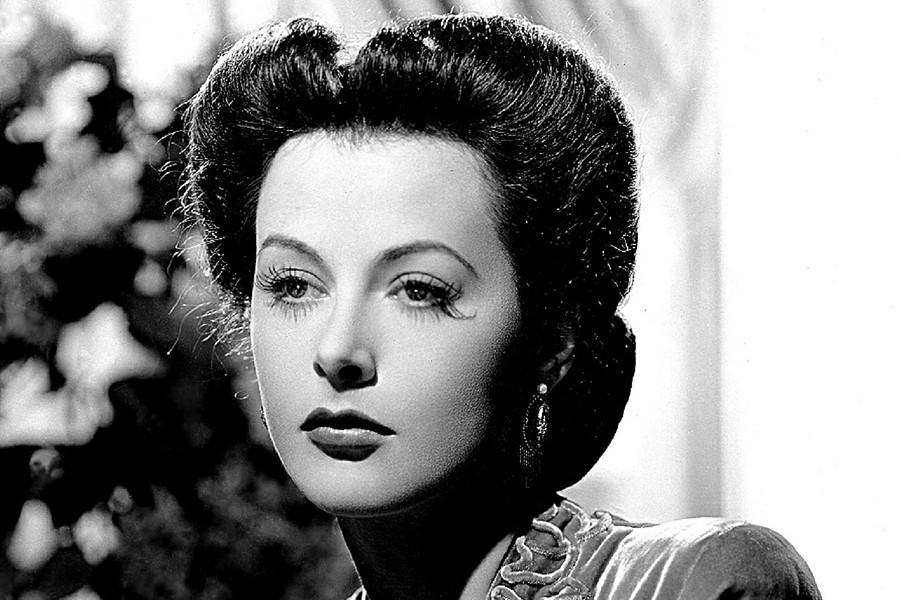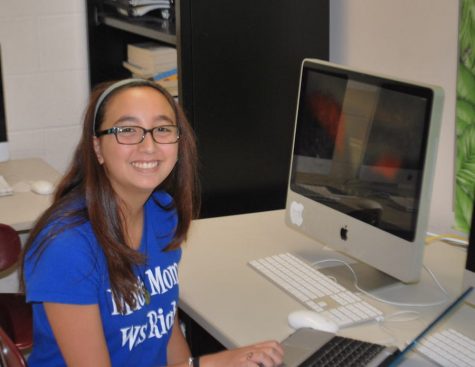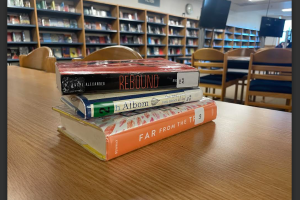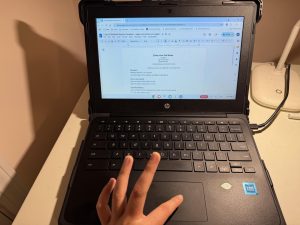Woman of the Month: Beyond The Most Beautiful Woman in the World
Hedy Lamarr, “The Most Beautiful Woman in the World,” remembered for her conception of frequency-hopping spread spectrum, the foundation of WiFi, Bluetooth, and cellular communications.
November 1, 2020
Hedy Lamarr was a world-famous actress, considered the most beautiful woman in the world. She was also an immigrant, a passionate supporter of the war against the Nazis, a sexual and cultural progressive, and the inventor of the technology at the basis of Bluetooth, WiFi, and cellular communications.
On November 9, 1914, Hedwig “Hedy” Kiesler was born to concert pianist Gertrud and bank director Emil Kiesler. Growing up in Vienna, Kiesler was a stubborn, rebellious child. In an attempt to tame their wild child, Gertrud and Emil sent Kiesler to finishing school in Switzerland as a teen, but she soon dropped out in favor of an acting career (Lamarr, Hedy [The Scribner Encyclopedia of American Lives]). With her raven hair, alabaster complexion and doe eyes, Kiesler caught the attention of film producers, ultimately starring in her first two films, Storm in a Waterglass and Money on the Street, in 1930.
In 1932, Kiesler gained notoriety for starring in Ecstasy, a film that follows the story of a woman seeking the company of younger men due to her husband’s impotence. The film was quickly banned in Austria due to a sex scene and a nude scene, both involving 17-year-old Kiesler.
Ecstasy caught the attention of 32-year-old Fritz Mandl, a millionaire Austrian arms dealer. In 1933, the pair met and were married the same year. Mandl, a former Jew, had converted to Catholicism to be able to conduct business with Nazis. At the insistence of Mandl, Kiesler, who was also Jewish, converted as well. In 1937, Kiesler “packed a single suitcase with jewelry, drugged her maid, and fled to Paris and then London” (Lamarr, Hedy [Encyclopedia of World Biography]). It is widely believed that Kiesler left Mandl because of her disdain for her husband’s involvement with the Nazis (Hedy Lamarr [World of Invention]) and his desire to control her every move (Hedy Lamarr [American Women]).
That September, Kiesler sailed from London to New York with Metro-Goldwyn-Mayer (MGM) producer Louis B. Mayer. Mayer had been in London to convince Kiesler to sign with MGM. It took the entire journey for Mayer to convince Kiesler to join the studio, but when Kiesler disembarked in New York, it was with a contract in hand and a brand new name. Inspired by Barbara La Marr, a silent film actress, Hedwig Kiesler had become Hedy Lamarr.
Lamarr made her American film debut in 1938, with the film Algiers. The success of the film launched her American career. Throughout World War II, Lamarr was a “fixture on American movie screens” (Lamarr, Hedy [Encyclopedia of World Biography]). Films such as The Heavenly Body (1943) transformed Lamarr into a sex symbol. She leveraged this label to support the battle against the Nazis, raising $17 million (~ $300 million today) by offering to kiss any man who purchased $25,000 in war bonds. Despite using her attractiveness to her advantage, Lamarr believed “[a]ny girl can be glamorous. All you have to do is stand still and look stupid,” (Lamarr, Hedy [Encyclopedia of World Biography]) and stated in her autobiography that her beauty had “attracted all the wrong people into [her] boudoir and brought [her] heartache and tragedy for five decades” (Lamarr, Hedy [The Scribner Encyclopedia of American Lives]).
Lamarr was more than just a pretty face on a famous actress. During her marriage to Mandl, Lamarr had acquired a great deal of knowledge about engineering munitions. When she made the acquaintance of composer George Antheil in 1940, Lamarr discovered a way to apply her knowledge to aid America. During World War II, the broadcast signals used to control radio-guided torpedoes were easily jammed by the enemies’ transmitters. To mitigate this problem, Lamarr proposed rapidly fluctuating the frequency of the control signal. To prevent the signal sent between a receiver and transmitter from being intercepted, the message would be divided and sent out across a spectrum of frequencies. The device conceived by Lamarr and Antheil mimicked a player-piano roll, with a “punch-card-like” system (Lamarr, Hedy [Encyclopedia of World Biography]) and a number of frequencies equivalent to the total numbers of white and black keys on a piano. In this way, only a portion of the signal could be taken out by a jammer.
In 1942, the pair were jointly awarded U.S. patent number 2,292,387, but Antheil later credited the entire idea to Lamarr. The concept, later dubbed frequency-hopping spread spectrum, was never employed during World War II. By the time frequency-hopping spread spectrum was used during the 1962 Cuban Missile Crisis, the patent had expired. Today, frequency-hopping spread spectrum is the foundation for Bluetooth, WiFi, and cellular communication.
After World War II, Lamarr’s film career began to decline. In 1950, she auctioned off all her possessions and moved to Mexico, ultimately retiring in Orlando, Florida a few years later. Toward the end of her life, Lamarr was finally recognized for her innovative frequency-hopping spread spectrum, receiving an Electronic Frontier Foundation Pioneer Award in 1997. Neither Lamarr nor Antheil ever received any monetary honor for their innovation.
Despite proving the brilliance of her mind, at the time many doubted the intelligence of such a beautiful face (Lamarr, Hedy [The Scribner Encyclopedia of American Lives]). But Hedy Lamarr, with her engagement in many affairs over the years, including ones with other women, is proof that a person can be open with their sexuality and maintain socially attractive qualities while simultaneously possessing the mental capacity to comprehend complex processes, like frequency-hopping spread spectrum.








